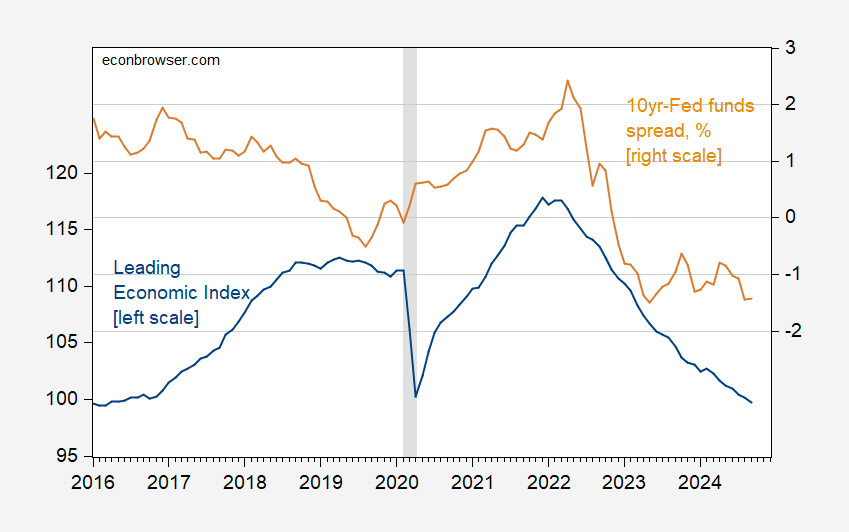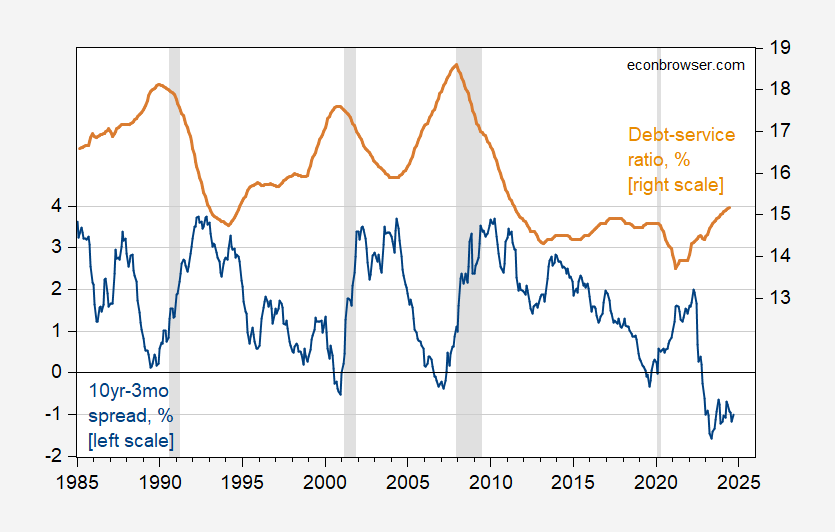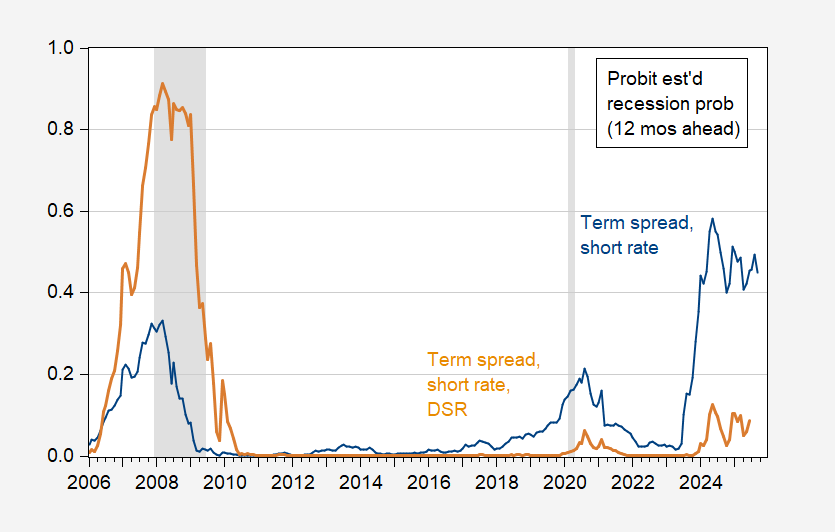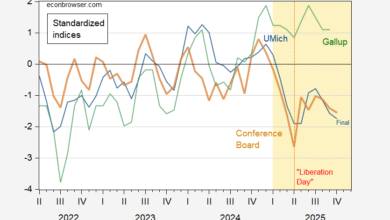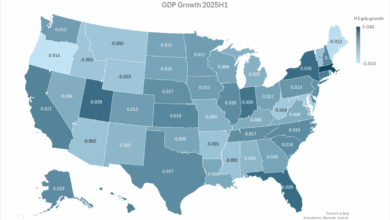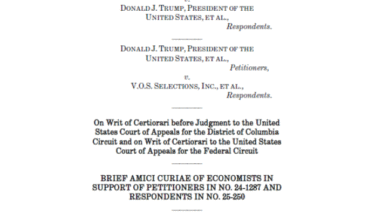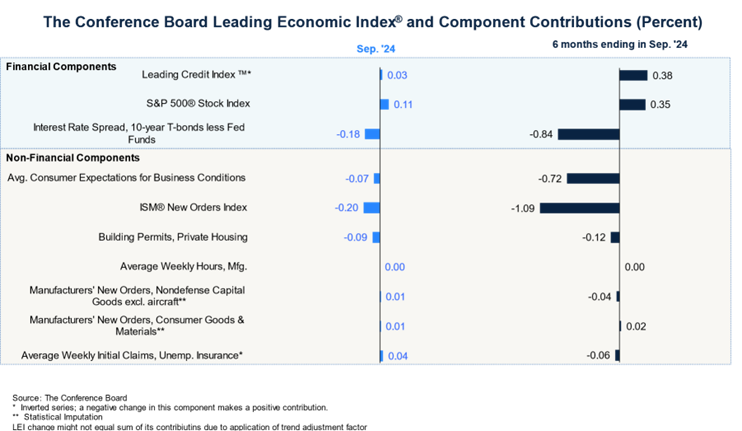
I’ve updated the “regression camp” membership list. Assuming no recession shows up (hear Cam Harvey talk about the issue), what can we take from the Conference Board’s Leading Economic Index returning to recession territory (it’s spent much of the last 18 months there):
The first thing to note is that the LEI includes (like many financial conditions indexes) the term spread in some form. So when the LEI is declining, part of it (I don’t know exactly how much) is due to changes in the term spread.
Figure 1: Conference Board Leading Economic Index (blue, left scale), and 10yr-Fed funds spread, % (tan, right scale). NBER defined peak-to-trough recession dates shaded gray. Source: Conference Board via TradingEconomics.com, US Treasury, Federal Reserve via FRED, NBER.
Here’s the relevance of this point. The term spread spread (with 3 month rate rather than Fed funds rate) indicates a 40% probability in October, 58% last May. So either the historical correlation has broken down, a recession will hit soon (or has already and we don’t know it). Perhaps an important variable has been omitted. Per Chinn and Ferrara (2024), we argue for the private nonfinancial sector debt-service ratio.
Figure 2: 10 year-3 month Treasury term spread (blue, left scale), and private nonfinancial sector debt-service ratio (tan, right scale), both in %. 2024Q2 debt-service ratio extrapolated using lagged values of changes in debt service ratio, the 3 month Treasury yield, AAA rate. DSR interpolated from quarterly to monthly using linear interpolation. NBER defined peak-to-trough recession dates shaded gray. Source: Treasury via FRED, BIS, NBER.
Interestingly, debt-service has been relatively low, compared to previous recessions.
A term spread – debt service augmented model (see this post) shows a much lower probability of recession, while providing a much better fit for the 2008-09 recession.
Figure 3: Estimated 12 month ahead probabilities of recession, from probit regression on term spread and short rate, 1986-2024 (blue), on term spread, short rate and debt-service ratio (tan). NBER defined peak-to-trough recession dates shaded gray. Source: Treasury via FRED, BIS, NBER, and author’s calculations.
Source link


